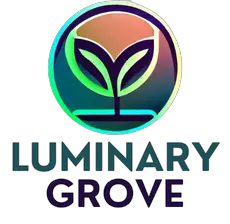Purple or blue/red technology is a common way of designing LED grow lights that focuses on providing the most important wavelengths of light for plant growth and development. Purple or blue/red technology involves combining blue and red LED chips to create a purple or pinkish light, which is also known as the Emerson effect.
Purple or blue/red technology is based on the principle that plants mainly absorb blue and red light for photosynthesis, which is the process by which plants convert light energy into chemical energy. Blue light stimulates vegetative growth, such as stem elongation, leaf expansion, and chlorophyll production. Red light stimulates flowering, such as bud formation, blooming, and fruiting.
By using purple or blue/red technology, LED grow lights can provide the optimal light for plant growth and development, while minimizing the waste of energy and heat. Purple or blue/red technology can also enhance plant quality, such as color, flavor, aroma, and nutrition.
Purple or blue/red technology works by using high-quality LED chips, such as Epistar or Bridgelux, which are some of the most popular LEDs for grow lights. These LED chips are mounted on a printed circuit board (PCB), which is a type of board that connects the electrical components of the grow light. The PCB is then attached to an aluminum heat sink, which helps to cool down the LEDs and prolong their lifespan.
Purple or blue/red technology uses constant current drivers, which are devices that regulate the current and voltage of the LEDs. The drivers can be external or internal, depending on the design of the grow light. The drivers can also be dimmable or non-dimmable, depending on the preference of the user.
Purple or blue/red technology can be configured in different ways, depending on the ratio, intensity, and distribution of the blue and red LEDs. Some common configurations are:
- 1:1 ratio: A balanced ratio of blue and red LEDs, which provides a general-purpose light for all stages of plant growth.
- 3:1 ratio: A higher ratio of red LEDs than blue LEDs, which provides a more flowering-oriented light for plants that need more red light to bloom.
- 5:1 ratio: A lower ratio of red LEDs than blue LEDs, which provides a more vegetative-oriented light for plants that need more blue light to grow.
Purple or blue/red technology is a simple and effective way of designing LED grow lights that can provide the most essential wavelengths of light for plant growth and development. Purple or blue/red technology can also improve plant quality and yield. However, purple or blue/red technology has some limitations, such as:
- It produces a less natural and appealing light, as it has a low color rendering index (CRI), which measures how accurately a light source reveals the true colors of objects.
- It limits plant diversity and quality, as it has a narrow spectrum and diversity, which means it does not provide other wavelengths of light that plants may need for other processes, such as UV for resin production or IR for temperature regulation.
- It causes plant stress and damage, as it has a high heat generation and radiation, which can affect plant metabolism, water loss, and stress response.
Therefore, purple or blue/red technology may not be suitable for all types of plants and growers. There are other types of LED grow lights that can provide a more full-spectrum and diverse light source for indoor plants, such as COB LED grow lights, quantum board LED grow lights, or bar or strip LED grow lights.


Leave a Reply